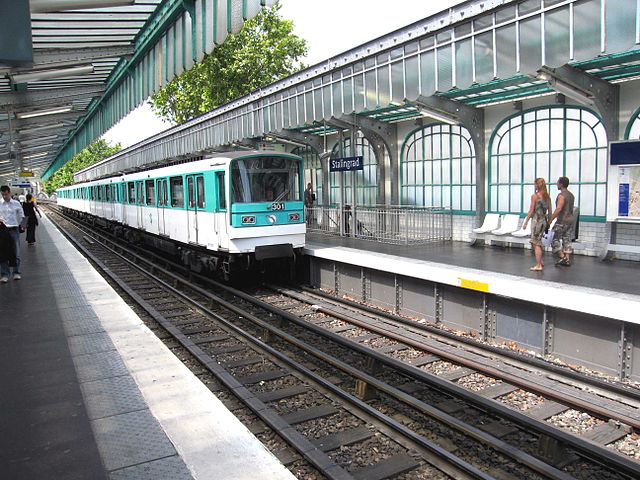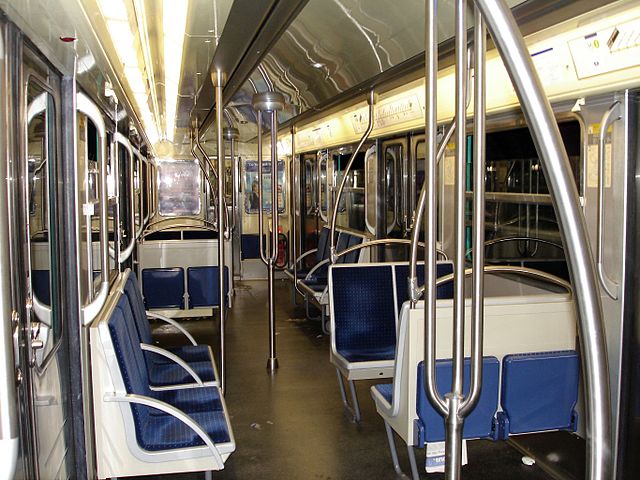The MF 67 is a fleet of steel-wheel electric multiple unit trains for the Paris Métro. The first MF 67 trains entered service on Line 3 in June 1968, and became one of the biggest orders for the Métro, with 1,482 cars has been constructed. The need to replace the Sprague-Thomson fleet, as well as increasing costs associated with the later-cancelled plan to introduce rubber-tyred trains on all Métro lines, were the main factors for the size of the order.
MF 67 train at Opéra on Line 3
Interior of MF 67 train
MF 67 on Line 2, at Stalingrad station.
Renovated interior (Line 3)
The Paris Métro, operated by the Régie autonome des transports parisiens (RATP), is a rapid transit system in the Paris metropolitan area, France. A symbol of the city, it is known for its density within the capital's territorial limits, uniform architecture and unique historical entrances influenced by Art Nouveau. The system is 226.9 kilometres (141.0 mi) long, mostly underground. It has 308 stations of which 64 have transfers between lines. There are 16 lines, numbered 1 to 14, with two lines, Line 3bis and Line 7bis, named because they used to be part of Line 3 and Line 7, respectively. Line 1, Line 4 and Line 14 are automated. Lines are identified on maps by number and colour, with the direction of travel indicated by the terminus.
A MF 01 train at Stalingrad
Image: Carte Métro de Paris
Métro signage
During the initial construction of the Métro, the tunnels were excavated in open sites and then covered.








